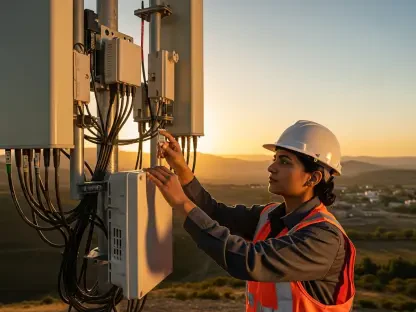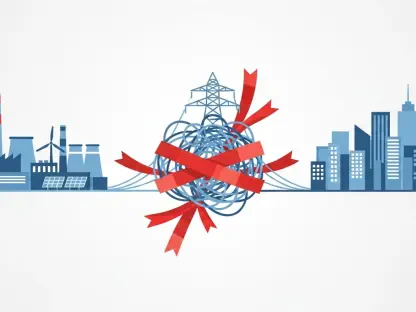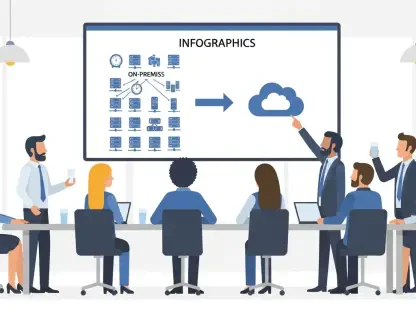Imagine a telecommunications giant spending a staggering $6 billion every year just to keep an outdated system alive, a system that guzzles energy and lags behind modern demands. This is the reality for AT&T as it grapples with maintaining its legacy copper networks across a vast US footprint. With a bold target to retire these systems by 2029, the company is at the forefront of a seismic shift in the industry. This roundup dives into diverse opinions, strategies, and concerns from industry leaders, regulatory bodies, and technology analysts about this ambitious transition, exploring what it means for customers, the environment, and the future of connectivity.
Diverse Views on AT&T’s Copper Phase-Out Strategy
Financial and Operational Challenges of Legacy Systems
Industry analysts have widely noted the immense financial burden of copper networks, often described as an unsustainable drain akin to powering a nearly empty facility in a remote location. The consensus is that the annual maintenance cost, pegged at billions, pushes companies like AT&T to pivot toward more efficient alternatives such as fiber and wireless solutions. This shift is seen as a critical step to reallocating resources for innovation rather than upkeep.
Some technology consultants, however, caution that the speed of this transition could strain operational budgets if not managed carefully. They argue that while the long-term savings are undeniable, the upfront investment in new infrastructure might create short-term fiscal pressures. This perspective highlights a balancing act between immediate costs and future gains, urging a phased approach to avoid financial hiccups.
A differing angle comes from operational experts who emphasize the technical hurdles of dismantling such an extensive network. They point out that coordinating the retirement across thousands of wire centers requires meticulous planning to prevent service disruptions, especially in rural areas where alternatives might not yet be fully deployed. This concern underscores the complexity beyond just dollars and cents.
Customer Protection Measures and Public Response
On the topic of customer impact, many consumer advocacy groups applaud AT&T’s commitment to safeguarding the small percentage of residential users—roughly 3%—still reliant on copper lines. The introduction of AT&T Phone-Advanced, a solution mimicking traditional services through modern technology, has been praised for supporting essential features like emergency 911 calls, fax, and medical monitoring systems. This focus on continuity is seen as a model for responsible migration.
Yet, skepticism persists among some community leaders who worry about the execution of these promises. They question whether notifications and technician support, already underway for a 2026 cutoff in certain areas, will reach vulnerable populations effectively. Concerns linger about potential gaps in service reliability during the switch, particularly for those less tech-savvy or in isolated regions.
A third viewpoint from digital inclusion advocates stresses the opportunity to bridge connectivity divides through this transition. They suggest that if managed well, moving to fiber and wireless could enhance access for underserved communities, provided AT&T prioritizes equitable rollout plans. This angle shifts the narrative from risk to potential societal benefit, adding a layer of optimism to the debate.
Regulatory Milestones and Regional Variations
Regulatory observers have highlighted AT&T’s recent approval from federal authorities to discontinue services in 500 wire centers, covering a significant slice of its network, as a major win. This green light, effective from 2026, is viewed as a testament to the company’s robust migration framework and sets a precedent for further approvals. Many in the policy sphere see this as a signal of growing alignment between corporate goals and public oversight.
Contrastingly, regional disparities draw mixed reactions, with particular attention on delays in areas like California where stakeholder discussions have stalled progress. Local policy analysts argue that such roadblocks reflect the importance of community buy-in, suggesting that without tailored engagement, timelines could slip further. This perspective reveals the tension between national ambitions and local realities.
A broader regulatory critique questions whether federal support will consistently match corporate schedules across all states. Some experts in telecommunications law note that varying state-level priorities might complicate the 2029 target, advocating for more flexible deadlines to accommodate these differences. This insight adds a cautionary note to the otherwise positive regulatory narrative.
Environmental Benefits and Industry Implications
Sustainability experts are enthusiastic about the environmental upside of retiring copper networks, pointing to AT&T’s recycling of 60 million pounds of material in a single year—an amount comparable to massive landmarks. This effort not only reduces waste but also generates revenue, earning praise as a dual win for profit and planet. Such initiatives are often cited as a benchmark for green practices in technology.
Industry watchers add that the energy conserved from phasing out these inefficient systems could power advancements in fields like artificial intelligence, positioning AT&T as a leader in resource reallocation. They argue that this move might inspire competitors to hasten their own transitions, potentially reshaping sector-wide standards for efficiency and innovation.
A more collaborative viewpoint emerges from trade associations pushing for unified approaches to IP-based service shifts. Many believe that AT&T’s proactive stance could catalyze industry efforts to standardize migration processes, ensuring smoother interconnectivity across carriers. This collective angle suggests that the ripple effects of one company’s actions could redefine operational norms on a larger scale.
Key Takeaways from the Copper Retirement Discussion
Reflecting on the varied insights gathered, it becomes clear that AT&T’s journey to retire copper networks by 2029 sparks both optimism and concern across multiple fronts. Financial analysts underscore the cost-saving potential, while operational and consumer voices call for careful execution to protect service continuity. Regulatory progress offers hope, though regional challenges remind stakeholders of localized complexities. Environmentally, the initiative stands out as a sustainability success, with broader industry implications hinting at a transformative shift.
Looking ahead, actionable steps emerge from this roundup for all involved parties. Telecommunications companies could take a page from AT&T’s playbook by fostering regulatory partnerships and prioritizing recycling programs to ease their own transitions. For consumers, staying updated on migration timelines and exploring modern service options remain crucial to navigating this change. Further exploration of industry reports and sustainability studies can deepen understanding of how such shifts will shape connectivity in the years to come, ensuring that no one is left behind in this digital evolution.









